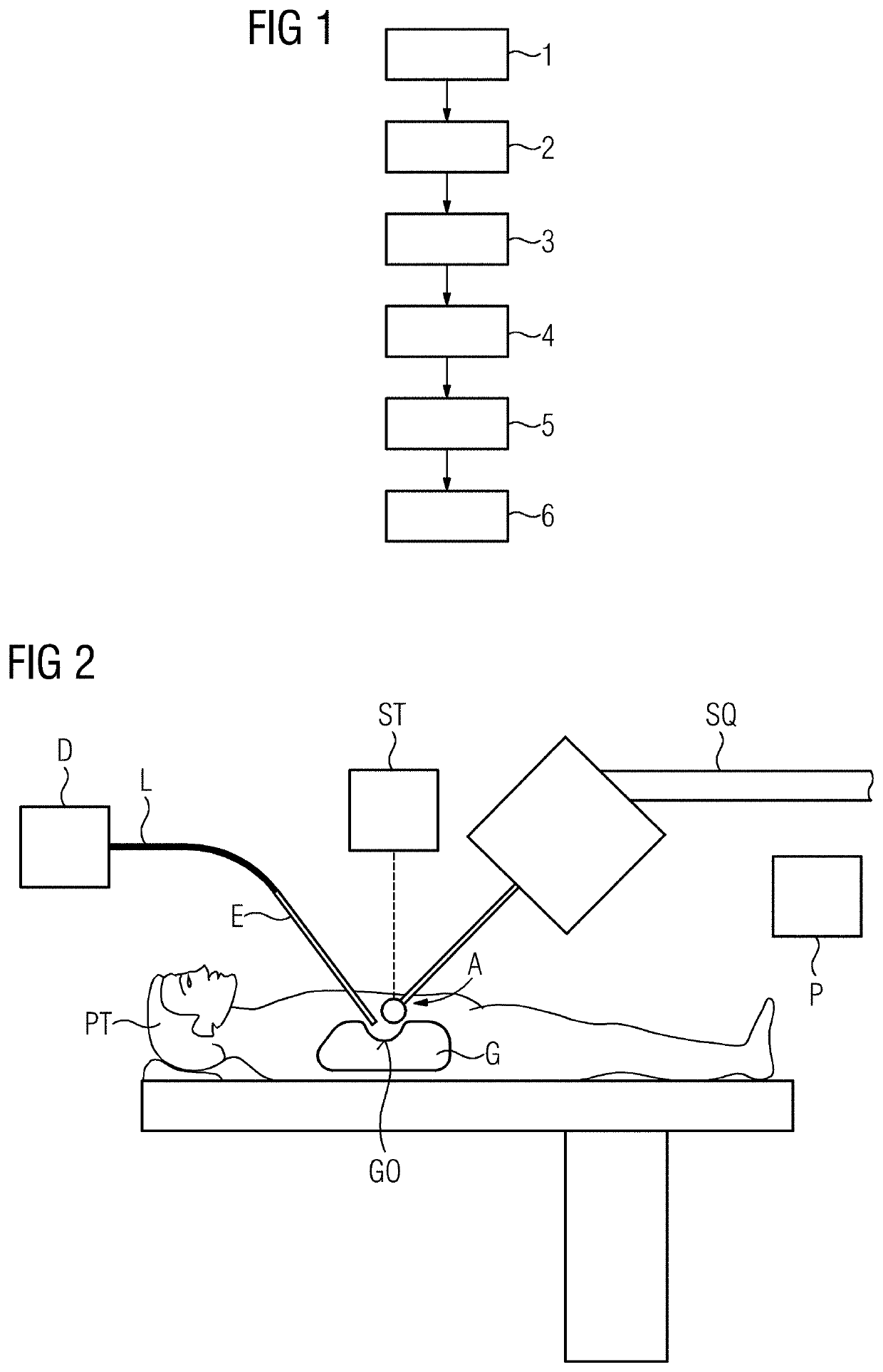Controlled irradiation of an object
a controlled irradiation and object technology, applied in the field of controlled irradiation of objects, can solve the problems of difficult to achieve and difficulty in achieving uniform or precise radiation dose over the entire surface of the tissue, so as to achieve more uniform irradiation and avoid excessive damage to surrounding healthy tissue or other materials.
- Summary
- Abstract
- Description
- Claims
- Application Information
AI Technical Summary
Benefits of technology
Problems solved by technology
Method used
Image
Examples
Embodiment Construction
[0134]FIG. 1 is a schematic representation of one embodiment of a method with the aid of a flowchart.
[0135]Following a tumor resection, an intraoperative radiation therapy is to be performed in order to kill tumor cells that have infiltrated into healthy tissue.
[0136]In act 1 of the method, a first substance having a variable optically observable property (e.g., a first fluorescent dye) is added to a tissue that is to be irradiated. This may be accomplished, for example, by administering the first fluorescent dye to the patient (e.g., orally or intravenously). The first fluorescent dye is then, for example, accumulated specifically in the tumor cells. A dye with the designation 5-ALA / PPIX, which is employed, for example, in the treatment of brain tumors or glioblastomas, may be used, for example, as the first fluorescent dye (e.g., for fluorescence-guided surgery). Alternatively, following completion of the tumor resection, the first substance (e.g., the first fluorescent dye) may b...
PUM
| Property | Measurement | Unit |
|---|---|---|
| excitation wavelength | aaaaa | aaaaa |
| fluorescent | aaaaa | aaaaa |
| fluorescence | aaaaa | aaaaa |
Abstract
Description
Claims
Application Information
 Login to View More
Login to View More - R&D
- Intellectual Property
- Life Sciences
- Materials
- Tech Scout
- Unparalleled Data Quality
- Higher Quality Content
- 60% Fewer Hallucinations
Browse by: Latest US Patents, China's latest patents, Technical Efficacy Thesaurus, Application Domain, Technology Topic, Popular Technical Reports.
© 2025 PatSnap. All rights reserved.Legal|Privacy policy|Modern Slavery Act Transparency Statement|Sitemap|About US| Contact US: help@patsnap.com

